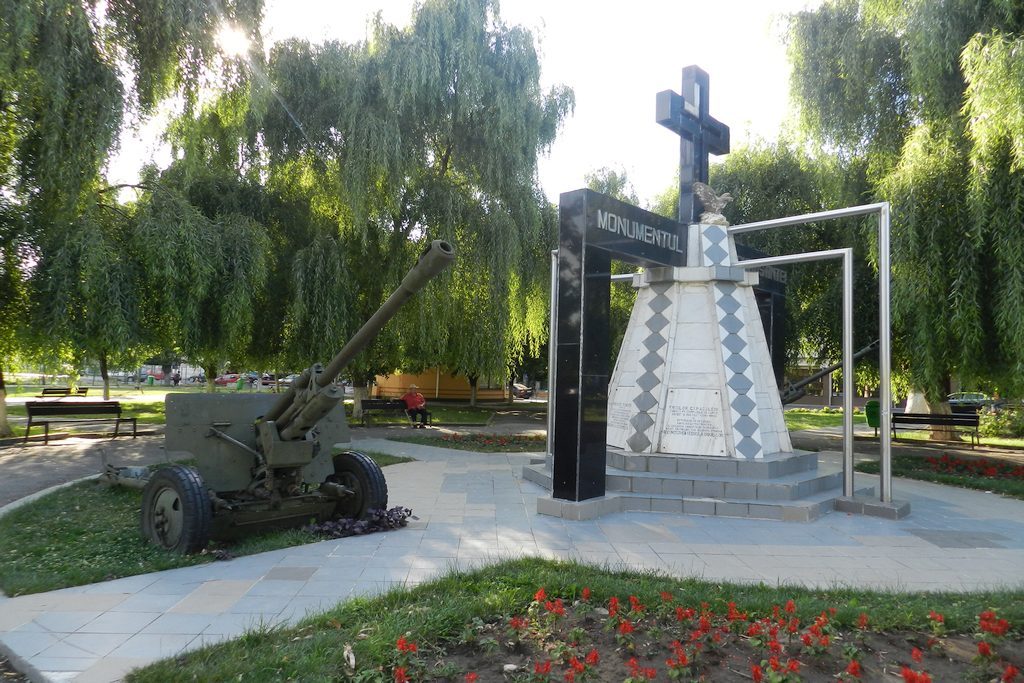

The Monument of Gratitude from Caracal is dedicated to the heroes who fought in the operations from East and West during the period 1941 – 1945, and to war veterans who were involved in the liberation of the Romanian land.
The monument was raised by the Local Council and City Hall of the Municipality of Caracal on the initiative of local branches of the National Association of War Veterans, National Union of Reserve and Retired Military Personnel and the National Association Cult of Heroes, being inaugurated on 25 October 2004.
After a period of neutrality for more than a year (during which the Kingdom of Romania allowed the evacuation of the Polish government, treasury and forces to British Egypt, but lost important territories in profit of Nazi Germany’s, allies from that time, namely the Soviet Union, Hungary and Bulgaria ), Romania changes its alliances with the arrival, at power of Ion Antonescu.
Makes an alliance with the Axis Powers in October 1940 and enters the war on their side in June 1941 in order to regain at least the territories abducted by URSS: Bessarabia, Northern Bucovina and Herta. After three years and two months of military campaigns against the USSR, leading the Romanian army to the steppes of Northern Caucasus and back, on 23 August 1944 with the Soviet army being already in northern Moldavia since March, King Mihai I gives his consent to the removal of of Marshal Antonescu by force if he refuses signing of the armistice with the United Nations. Following Antonescu’s clear refusal, King Mihai I deposed and arrested him, and Romania sided with the Allies. Romania’s participation in the Second World War was characterized thus through two campaigns: the Eastern liberation of Bessarabia and of Bucovina, which has lost, and the West one for the release of Transylvania, which has won.
At the end of the war, onto diplomatic plan, only the participation by side of the Axis was taken into account and Romania signed the Peace Treaty from Paris (1946) as a defeated enemy state.
The signing of the Armistice Convention was held in Moscow on 12 September 1944 ,which declares Romania a country defeated in war, enshrines the annexations of the Soviet from June 28, 1940 and requires the payment of war compensations to the USSR, worth $ 300 million, to be paid within six years, in petroleum products, wood etc. It was declared invalid the Arbitration from Vienna, ‘Transylvania or most of it’ returning to Romania.
With a total of over 560,000 soldiers, of which died more than 169 822, the Romanian Army, which has traveled over 1,700 kilometers from the Black Sea to the the Quadrilateral of Bohemia released until 12 May 1945 over 200,000 square kilometers from foreign occupation (Romania, Hungary, Czechoslovakia and Austria), crossed through heavy fighting around 20 mountain massifs, forced 12 big water courses and released more than 3,821 localities, of which 53 cities. Romanian soldiers have caused losses equivalent to 15 enemy divisions.
